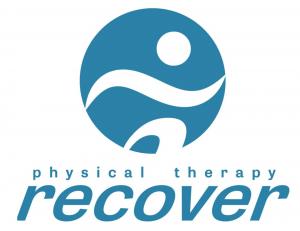— Chaise Bennett
SLIDELL, LA, UNITED STATES, October 11, 2024 /EINPresswire.com/ — The postpartum period is a critical time for new mothers as they navigate the physical and emotional changes that come with childbirth. While much attention is given to the care of the newborn, it is equally important to focus on the recovery and well-being of the mother. Physical therapy plays a vital role in helping women regain strength, function, and confidence during the postpartum period.
Chaise Bennett, owner of Recover Physical Therapy in Slidell, Louisiana, emphasizes the importance of a tailored approach to postpartum recovery. “Each woman’s postpartum journey is unique, and physical therapy can be an essential component in addressing the specific challenges that arise after childbirth,” Bennett explains. This press release will explore the benefits of physical therapy for postpartum recovery and how it can aid in restoring strength and function.
The Physical Challenges of Postpartum Recovery
Childbirth, whether vaginal or via cesarean section, places significant stress on the body. During pregnancy, a woman’s body undergoes numerous changes, including weight gain, altered posture, and the stretching of muscles and ligaments. The pelvic floor, abdominal muscles, and lower back are particularly affected, leading to common postpartum issues such as pelvic floor dysfunction, diastasis recti, and lower back pain.
Pelvic floor dysfunction is one of the most common issues faced by new mothers. The pelvic floor muscles, which support the bladder, uterus, and bowel, can become weakened or injured during childbirth. This can result in symptoms such as urinary incontinence, pelvic pain, and a feeling of heaviness or pressure in the pelvic area. Physical therapy can help strengthen these muscles, improve bladder control, and reduce pain.
Diastasis recti, the separation of the abdominal muscles, is another common concern. This condition occurs when the rectus abdominis muscles, which run vertically along the abdomen, separate to accommodate the growing uterus. After childbirth, many women are left with a gap in their abdominal muscles, which can lead to a protruding belly, lower back pain, and difficulty with certain movements. Physical therapy can provide targeted exercises to help close this gap, restore core strength, and improve overall function.
Lower back pain is also prevalent among new mothers, often due to the strain of carrying and caring for a newborn. The added weight of pregnancy, combined with the physical demands of early motherhood, can lead to muscle imbalances and postural issues. Physical therapy can address these issues by improving posture, strengthening the core and back muscles, and teaching proper body mechanics for lifting and carrying.
How Physical Therapy Supports Postpartum Recovery
Physical therapy for postpartum recovery is designed to address the specific needs of each woman, helping her regain strength, function, and confidence. A physical therapist will begin with a thorough assessment to identify any issues related to the pelvic floor, abdominal muscles, and overall musculoskeletal system. This assessment allows for the development of a personalized treatment plan tailored to the individual’s needs and goals.
For women experiencing pelvic floor dysfunction, physical therapy can include exercises to strengthen the pelvic floor muscles, improve coordination, and reduce symptoms such as incontinence and pain. Techniques such as biofeedback and manual therapy may also be used to enhance muscle function and relieve tension in the pelvic area.
In the case of diastasis recti, a physical therapist will guide the patient through exercises that target the deep abdominal muscles, such as the transverse abdominis. These exercises are designed to gradually close the gap between the separated muscles, restore core stability, and prevent further injury. Physical therapy also emphasizes the importance of proper breathing techniques and posture, which are crucial for supporting the healing process.
Lower back pain is addressed through a combination of strengthening, stretching, and posture correction exercises. A physical therapist will work with the patient to improve core strength, enhance flexibility, and correct any muscle imbalances that may be contributing to pain. Education on proper body mechanics is also provided, helping the patient avoid further strain while caring for her newborn.
Physical therapy also plays a key role in helping women return to their pre-pregnancy activities, whether that includes exercise, work, or daily household tasks. By gradually building strength and endurance, physical therapy can help new mothers regain their ability to engage in physical activities without pain or discomfort. This is particularly important for those who wish to resume exercise routines, as physical therapy can provide guidance on safe and effective ways to return to fitness.
The Emotional and Psychological Benefits
In addition to the physical benefits, physical therapy can also have a positive impact on a woman’s emotional and psychological well-being. The postpartum period can be a time of emotional vulnerability, and the physical changes that occur after childbirth can contribute to feelings of frustration, anxiety, or low self-esteem. Physical therapy offers a supportive environment where women can address their concerns, set achievable goals, and see tangible progress in their recovery.
By improving physical function and reducing pain, physical therapy can help new mothers feel more confident in their bodies and more capable of handling the demands of motherhood. The process of setting and achieving recovery goals can also provide a sense of accomplishment and empowerment, which is essential for mental health during the postpartum period.
Conclusion
Physical therapy is an invaluable resource for women recovering from childbirth, offering targeted solutions for common postpartum issues such as pelvic floor dysfunction, diastasis recti, and lower back pain. Through personalized treatment plans, physical therapy helps women regain strength, function, and confidence, allowing them to fully engage in their roles as mothers while taking care of their own health.
For those navigating the challenges of postpartum recovery, seeking the guidance of a physical therapist can make a significant difference in the journey toward regaining strength and well-being. Chaise Bennett and the team at Recover Physical Therapy in Slidell, Louisiana, are committed to supporting new mothers in this important phase of their lives, providing expert care and personalized treatment plans to help them achieve their recovery goals.
Morgan Thomas
Rhino Digital, LLC
+1 504-875-5036
email us here
Visit us on social media:
Facebook
Legal Disclaimer:
EIN Presswire provides this news content “as is” without warranty of any kind. We do not accept any responsibility or liability
for the accuracy, content, images, videos, licenses, completeness, legality, or reliability of the information contained in this
article. If you have any complaints or copyright issues related to this article, kindly contact the author above.
![]()
Originally published at https://www.einpresswire.com/article/751054431/physical-therapy-for-postpartum-recovery-regaining-strength-and-function





